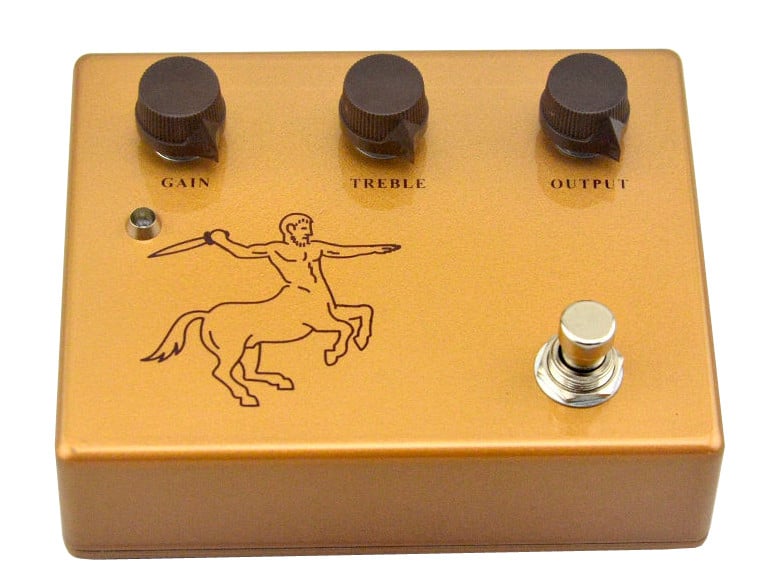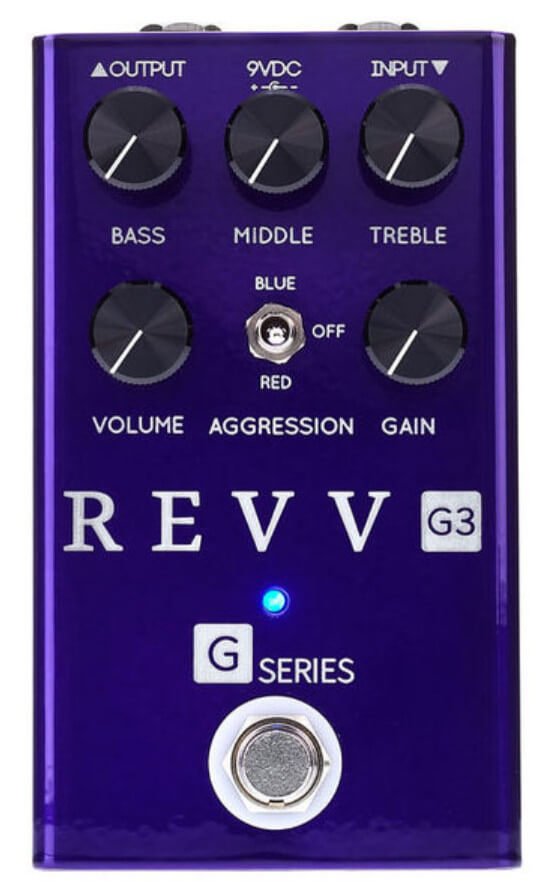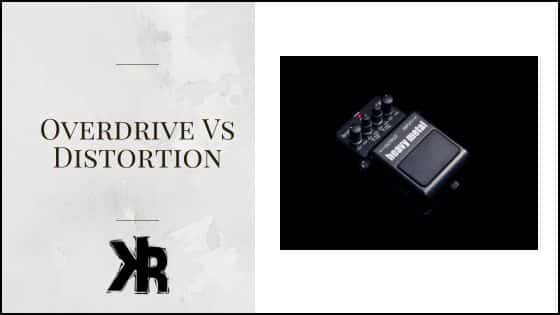Table of Contents
In the realm of music, effects are instrumental in molding and amplifying the sound of the guitar. Overdrive and distortion stand out as two of the most discussed effects, each with its own set of characteristics that influence the guitar’s tone.
This Killer Rig article will unpack the intricacies of both overdrive and distortion, exploring their mechanics and the nuances in their sound impact. By the end, you will be better equipped with the knowledge to harness these effects and enhance your guitar sound.
Overdrive Vs Distortion Summary
Overdrive:
- Overdrive is a milder, lower-gain level of distortion. It takes the guitar’s original tone and pushes it harder, resulting in a more saturated sound.
- Overdrive pedals will add distortion to your signal, in addition to boosting it. They are designed to make the tubes in valve amplifiers work harder at lower volumes.
- Overdrive pedals tend to preserve the guitar’s original tone, while adding some grit and sustain.
Distortion:
- Distortion pedals produce way more gain and clip the signal way harder than overdrive while remaining pretty tight and aggressive. They add a consistent crunch or grit to what you’re playing.
- Distortion pedals not only add more saturation, but they also tend to alter your sound. They change the sound completely and saturate the signal.
- Distortion pedals are more aggressive than overdrive in the way that they affect your tone.
What is Overdrive?
Overdrive, in the context of guitar music, refers to the natural saturation or “drive” of an amplifier when its volume is increased. This effect is often sought after for its warm and smooth sound, reminiscent of classic rock and blues tones.
At its core, overdrive is the result of pushing an amplifier’s tubes or circuits beyond their normal operating capacity.
When the input signal (from the guitar) exceeds what the amplifier can handle, the peaks of the sound waves get “clipped” or flattened. This clipping produces a soft, rounded tone, which is the hallmark of overdrive.
Historically, guitarists achieved overdrive by turning up their amplifiers to the maximum, causing the tubes to saturate.
With advancements in technology, overdrive pedals were developed, allowing musicians to achieve this saturated sound without necessarily cranking up their amps to high volumes.
The overdrive effect is versatile and can be used in various music genres. It adds a touch of grit to the sound without overpowering it, making it ideal for rhythm guitar sections or solos that require a more subtle form of distortion.
In essence, overdrive provides a balanced blend of clean and distorted tones, giving guitarists the flexibility to add warmth and character to their sound while retaining the instrument’s natural nuances.

Popular Overdrive Pedals
Some of the pedals in this list are clones of old classics, and others are newer designs utilizing modern technology. However, all of them are great options for anyone looking to add something special to their rig:
- MXR Timmy.
- Ibanez TS9 Tube Screamer.
- Wampler Tumnus.
- Boss BD-2 Blues Driver.
- Fender Santa Ana Overdrive.
- Strymon Sunset.
- Electro-Harmonix Soul Food.
- JHS Double Barrel V4 overdrive pedal.
- Fulltone OCD V2 Overdrive Pedal.
- JHS 3 Series Overdrive – Best Budget Option.

What is Distortion?
Distortion, a cornerstone in the world of electric guitar effects, is all about altering the original sound signal to produce a grittier, more aggressive tone. It’s a staple in genres like rock, metal, and punk, but its influence can be found across a spectrum of musical styles.
Unlike overdrive, which gently clips the peaks of sound waves, distortion intensely modifies the waveform, resulting in a harder, sharper clipping.
This process transforms the clean signal from the guitar into a thicker, more saturated sound. The outcome? A tone that’s powerful and rich in harmonics.
The origins of distortion trace back to guitarists discovering the raw, crunchy sound produced when amplifiers were unintentionally damaged or when speakers tore.
This “mistake” soon became an intentional pursuit, leading to the creation of distortion pedals, devices specifically designed to emulate and control this effect.
Distortion pedals come with various controls. They allow guitarists to adjust the level of distortion, tone, and volume. This provides a wide range of sound possibilities! From a mild crunch to a heavy, roaring sound.

Popular Distortion Pedals
These pedals are made by various manufacturers and offer different types of distortion, from subtle to full-on. The choice of pedal depends on the player’s preference and the style of music they play. Some pedals are better suited for metal, while others are better for classic rock or blues:
- Fender Pugilist Distortion Pedal.
- Wampler Sovereign Distortion.
- MXR M75 Super Badass ’75 Distortion.
- Revv G3.
- Boss DS-1.
- Friedman BE-OD.
- Amptweaker TightMetal JR.
- TC Electronic Dark Matter.
- Walrus Audio Iron Horse V2.
- Earthquaker Devices Acapulco Gold.
Check out my article on The Best Distortion pedals here!
Difference Between Overdrive and Distortion
When navigating the world of guitar effects, understanding the distinction between overdrive and distortion is crucial.
While both effects modify the guitar’s sound signal to produce a saturated tone, the degree and nature of this saturation differ significantly. Here’s a breakdown of the primary differences:
- Purpose:
- Overdrive: Designed to mimic the sound of a cranked tube amp or to drive one into a natural and vigorous grittiness. The goal is to emulate the interaction of a guitar plugged into a tube amp without significantly coloring the source sound.
- Distortion: More aggressive in nature, distortion pedals transform the original tone, creating a sound that stands on its own.
- Effect on Tone:
- Overdrive: Pushes the valves to the point of distortion or emulates this effect, especially for solid-state amplifiers. While it adds some distortion to the signal and boosts it, the original tone remains largely unchanged.
- Distortion: Adds a higher degree of saturation and significantly alters the original sound, making it more pronounced and distinct.
- Response to Playing Dynamics:
- Overdrive: Highly dynamic, overdrive pedals respond well to the intensity of picking. They can be paired with distortion for tight, high-gain metal tones.
- Distortion: Provides a more uniform signal, making the sound consistent. However, finding the optimal setting on a distortion pedal can require some fine-tuning.
- Aggressiveness:
- Overdrive: Generally milder in its effect, overdrive adds a touch of “spiciness” or “heat” to the sound, making it suitable for genres that require a subtle grit.
- Distortion: Offers a spicier and hotter effect, resulting in a more aggressive and bold tone.
- Usage:
- Overdrive: Popular in genres like blues, rock, and country, overdrive adds a touch of grit and sustain, enhancing the guitar’s natural sound.
- Distortion: Associated with heavier genres like rock and metal, distortion gives the sound a powerful boost, making it stand out.
Recognizing these differences allows guitarists to make informed decisions, tailoring their sound to fit their musical vision.
How to Choose Between Overdrive and Distortion
Both effects offer unique tonal enhancements, but they cater to different musical needs and tastes. To simplify the decision-making process, we’ve broken down the key differences in a comparative table.
However, it’s essential to remember that personal preference plays a significant role, and what works for one guitarist might not resonate with another.
| Criteria | Overdrive | Distortion |
|---|---|---|
| Gear Compatibility | Works well with a variety of gear, but shines with setups that emphasize natural guitar tones. | Some distortion pedals might be more selective, pairing better with specific amps or guitar types. |
| Desired Tone | Milder, natural-sounding distortion. Adds warmth without overwhelming the original tone. | Aggressive and bold. Transforms the original tone into something more pronounced. |
| Typical Genre | Commonly used in blues, rock, and country. | A staple in heavy rock and metal genres. |
| Stacking Potential | Can be stacked with other pedals for a richer sound. | Stacking can lead to very aggressive and unique tones. |
| Recommendation | Experiment with different gear combinations. Aim for a tone that’s closer to natural guitar sound. | Test with various setups to find the perfect aggressive tone. Always try before buying. |
When choosing between overdrive and distortion, it’s not just about the technical differences, but also about the emotion and vibe you want to convey in your music.
Conclusion
Navigating the world of guitar effects can be both exhilarating and daunting. The choice between overdrive and distortion, two titans in the realm of tonal enhancement, epitomizes this journey.
While they may seem similar on the surface, their unique characteristics and applications set them apart.
Whether you’re drawn to the warm subtleties of overdrive or the bold assertiveness of distortion, it’s essential to remember that there’s no right or wrong choice—only what resonates with your musical vision.
As you continue to explore and experiment, let your passion for music be your compass. After all, the quest for the perfect tone is not just about the destination, but the journey itself.
FAQs
Can I use both overdrive and distortion together?
Absolutely! Many guitarists stack or combine these effects to achieve unique tones. Experimenting with the order and settings can yield a wide range of sounds.
Which is better for beginners: overdrive or distortion?
It depends on the genre and sound you’re aiming for. However, starting with overdrive can offer a gentler introduction to saturation effects, allowing you to gradually explore more aggressive tones with distortion.
Do I need a specific type of amp for these effects?
While some amps might pair better with certain pedals, both overdrive and distortion can be used with a variety of amplifiers. It’s always a good idea to test the pedal with your amp to find the best match.
How do I avoid unwanted noise when using these effects?
Ensure your guitar’s setup is optimal, use quality cables, and consider investing in a noise gate pedal to help eliminate unwanted noise and hum.
Are there other effects similar to overdrive and distortion?
Yes, there are other saturation effects like fuzz and boost. Fuzz offers an even more aggressive saturation than distortion, while boost amplifies the signal without adding much coloration.

